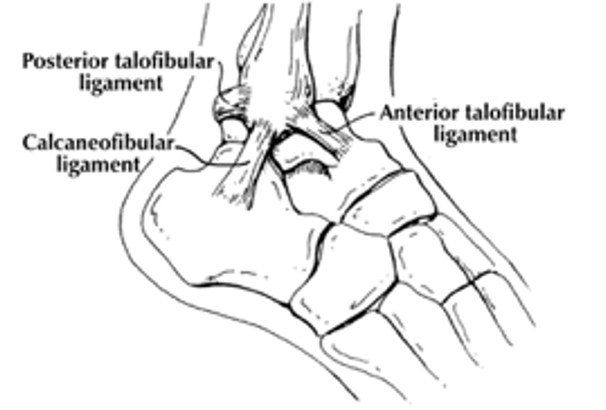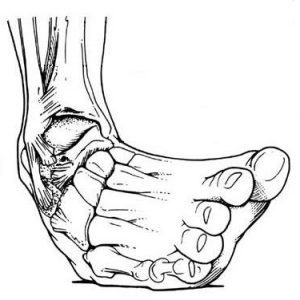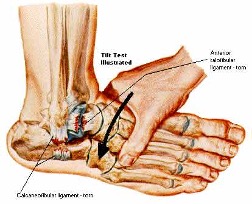What is Ankle Instability and how can they be treated?
Book a Free Intro call - T: 07500 938115, E: Mrshariff-sec@outlook.com
What is an Ankle Instability ?

What happens when during a sprain of the ankle?
The most common way to sprain an ankle is when the foot lands on an uneven surface and the foot rolls inwards. This is called an inversion injury.
The ligaments are stretched (sprained) and depending on the severity of the injury may be partially or completely torn.
Pain on the inside (medial side) of the ankle may be due to bruising of the bones or ligaments.
In addition, there may be injury to the cartilage (osteochondral lesion), tendons (e.g. Achilles tendon tear), the small nerves in the ligaments that aid in balance (proprioception) and the nerves that supply sensation to the ankle (causing numbness).

Book a call with one of our team
Find out how we can help you with your Ankle Sprains with both non-surgery and surgical treatments. Simply fill in this contact form and our Medical Secretary will be in touch to schedule a time that works for you.Symptoms of an Ankle Sprain
A sprained ankle is usually painful and swollen. There may also be bruising, tenderness to touch and it may be difficult to put weight through or stand on the foot. More severe ankle injuries can cause fractures or even a complete dislocation of the ankle joint in which case it is very important to seek medical attention.
Testimonials
Kent’s Holistic Foot & Ankle specialists
The Sajid Shariff clinic is a private orthopaedic clinic based in SE London and Kent that specialises in surgical and non-surgical treatment of foot and ankle conditions including ankle sprains, bunions, plantar fasciitis and achilles tendonitis.

Keep an eye on the shape of your feet; if you see changes see a doctor to find out if there are any recommendations to prevent hallux valgus from forming

Strengthen your feet by exercising them

Wear shoes that fit your feet well and offer good support

Try to avoid shoes that have a heel or pointed toe
Investigations & Consultations for Ankle Sprains
Different types of tests may be recommended by a doctor to complete the diagnosis and find out exactly what damage has occurred:X-Rays
Look at the bones and are useful for showing fractures/broken bones. Sometimes the fracture or break may be subtle such as a hairline fracture and the it may be necessary to get further tests.
Stress X-rays
These are taken while the ankle is being pushed in different directions and can help to show whether the ankle is moving abnormally because of the torn ligaments.
Magnetic Resonance Imaging (MRI) scans
These scans are very good at looking at the soft tissues such as ligaments, tendons or the cartilage of the joint surface. Subtle fractures such as avulsions (small bone chip), hairline fractures and stress fractures which are not visible on an xray may be picked up on the MRI scan.
Ultrasound
This type of scan helps to observe the ligament directly while your ankle is moved. This allows the doctor to determine how much stability the ligament provides.
Clinical Examination Tests for an unstable ankle
Anterior Drawer Test – tests whether the ATFL is torn

Inversion Stress Test

Treatments for Ankle Sprains
RICE (Rest, Ice, Compression, Elevation)
For milder sprains, the simple home treatment follows the RICE protocol:
RICE: Rest Ice Compression Elevate
- Rest the ankle by not walking on it.
- Ice should be applied as soon as possible to keep the swelling down. Use it for 20 to 30 minutes, three or four times daily. Do not apply ice directly to the skin.
- Compression dressings or bandages will support the injured ankle.
- Elevate the ankle above the level of your heart as often as possible during the first few days.
Medication: Nonsteroidal anti-inflammatory drugs (NSAIDs) such as ibuprofen and naproxen can help control pain and swelling.
Non Surgical Treatments
Some sprains will require treatment in addition to the RICE protocol and medications.
- Crutches: In most cases, swelling and pain will last from 2 to 3 days. Walking may be difficult during this time and it may be helpful to use crutches.
- Immobilisation: During the early phase of healing, it is important to support the ankle and protect it from sudden movements. For more severe sprains, a removable plastic device such as a boot or a brace can provide support.The doctor may encourage you to put some weight on your ankle while it is protected. This can help with healing
- Physiotherapy: Rehabilitation exercises are used to prevent stiffness, increase ankle strength, and prevent chronic ankle problems.
- Early motion. To prevent stiffness, physiotherapists will recommend exercises that involve range-of-motion or controlled movements of your ankle without weight or resistance.
- Strengthening exercises. Once you can bear weight without increased pain or swelling, exercises to strengthen the muscles and tendons in the front and back of your leg and foot will be the next step. Water exercises may be used if land-based strengthening exercises, such as toe-raising, are too painful. Exercises with resistance are added as tolerated.
- Proprioception (balance) training. Poor balance often leads to repeat sprains and ankle instability. A good example of a balance exercise is standing on the affected foot with the opposite foot raised and eyes closed. Balance boards are often used in this stage of rehabilitation.
- Endurance and agility exercises. Once you are pain-free, other exercises may be added, such as agility drills. Running in progressively smaller figures-of-8 is excellent for agility and calf and ankle strength. The goal is to increase strength and range of motion as balance improves over time.
Surgery for Ankle Instability
10-20% of patients who have a significant ankle injury will still have recurrent instability and sprains of their ankle. This may limit daily activities, work or sporting pursuits.
In this situation surgery to reconstruct the lateral ligaments may be considered.
Ankle sprain recovery
By about 6 weeks, the majority of patients will be significantly better. By 3 months many will be back to most activities but a complete return to competitive sport may take 4-6 months.
Patients who have ongoing pain after an ankle sprain, which may due to an additional injury to other parts of the ankle will require further investigation.
What if the ankle repeatedly gives way/ recurrent sprains?
If the ankle is unstable it may become swollen and painful. If there are recurrent inversion sprains over a long period these may damage the cartilage of the ankle joint and there is a risk of developing spurs or arthritis.
Results & Next steps
Almost all ankle sprains can be treated without surgery in the first instance. Even a complete ligament tear can heal without surgical repair if it is immobilised appropriately.
A three-phase program guides treatment for most ankle sprains:
Phase 1: resting, protecting the ankle and reducing the swelling.
Phase 2: restoring range of motion, strength and flexibility.
Phase 3: maintenance exercises and the gradual return to activities that do not require turning or twisting the ankle. This will be followed later by being able to do activities that require sharp, sudden turns such as tennis, basketball, or football.
This three-phase treatment program may take just 2 weeks to complete for minor sprains, or up to 6 to 12 weeks for more severe injuries.

